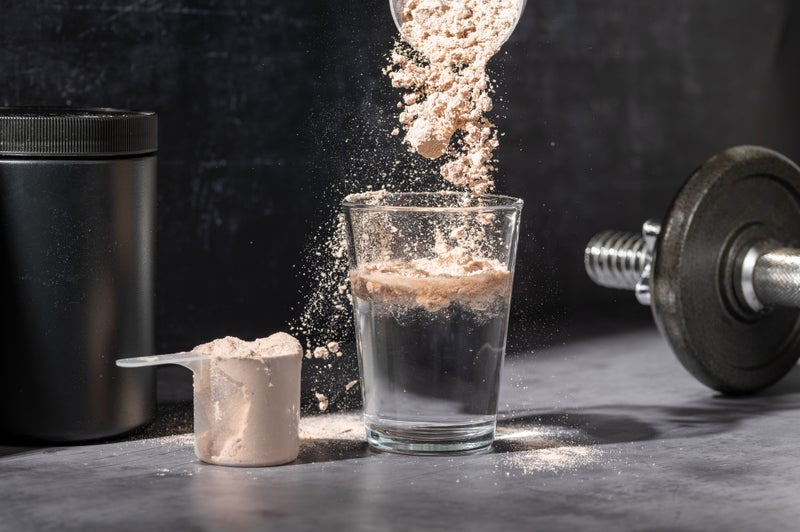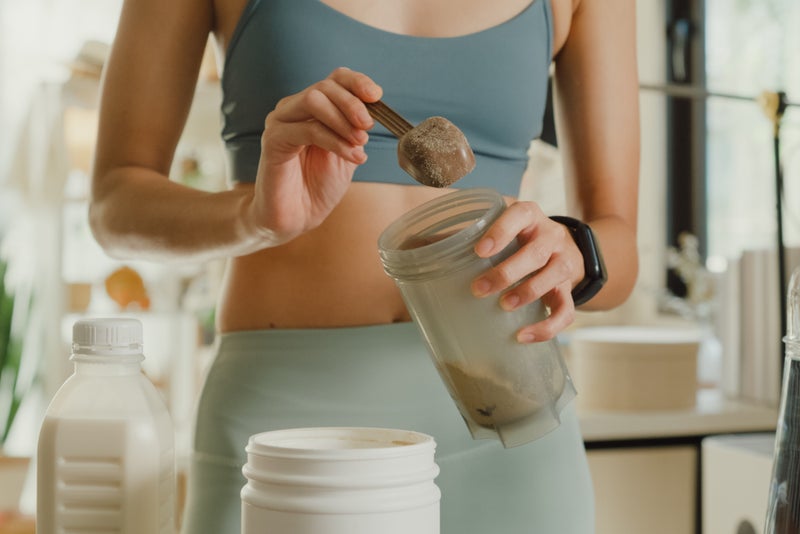No, you really don’t need to be eating more protein
No, you really don’t need to be eating more protein
Share:
From pizza to Weetabix, it seems no food is safe from becoming a mere vessel for ’tein. Helen Coffey investigates how it went from gym bro fodder to panacea for the masses, and asks the experts whether it really is good for us, or just the latest dietary marketing ploy to grab our attention. There’s a tipping point with every food fad – a moment when whatever the latest trend is seems to have strayed into absurdity. For protein, it was possibly the introduction of “Weetabix Protein”, the existence of which recently stopped me in my tracks in the supermarket aisle.
![[An increasing number of people are making it a priority to consume more protein in their diet]](https://static.independent.co.uk/2025/01/30/15/56/iStock-2044849531.jpeg)
While we’ve mostly become inured to the sight of an ever-growing menagerie of protein-enhanced products – smoothies, ice cream, cheese, snack bars et al – there was something about the inclusion of the usually humble, no-fuss breakfast biscuits among this motley crew that broke me. Weetabix is already doing God’s work – it’s made from 100 per cent wholegrain, high in fibre, low in sugar, salt and fat, and fortified with thiamin (B1), riboflavin (B2), niacin, folic acid and iron. Weetabix does not need to be surgically enhanced by shoving in extra protein, too. Is nothing sacred? Surely not everything we eat must be packed to the gills with the stuff?.
![[It's better to get your protein from whole, unprocessed foods where possible]](https://static.independent.co.uk/2025/01/30/15/28/iStock-1644746219.jpeg)
But increasingly, it is. Supplementary protein powder and shakes are nothing new, of course, having been around since the 1950s, when bodybuilders and athletes started using them. They steadily became more mainstream, but remained largely the preserve of gym bros looking for extra “gains” when attempting to build muscle. In the past few years, however, protein has experienced a popularity explosion across the board, which has seen it added to a widening array of foodstuffs and proactively consumed by a much greater proportion of the population.
![[Muscle-bound influencers on Instagram have done much to promote protein supplements]](https://static.independent.co.uk/2025/01/30/15/36/iStock-892835134.jpeg)
Just as “fat-free” was the magic phrase to get someone to purchase your product in the 2000s, so “protein” has become its natural successor. Forget health food shops – stroll into any supermarket nowadays, from M&S to Lidl, and you’ll find packaging that practically screams about an item’s lofty ’tein credentials at every turn. Big, brash labels abound, like hyperactive paddles at an auction house: “20g!” “30g!” “50g!!!!!” “SOLD to the tiramisu on aisle nine!”.
The latest data from marketing research firm Mintel indeed shows an uptick in 2024: high or added protein claims went from featuring on 5 per cent of UK food and non-alcoholic drinks launched in 2023 to 7 per cent last year. “While this latest rise was partly fuelled by products like meat and poultry highlighting their intrinsic protein content, activity has also picked up in many categories not traditionally associated with high protein, such as desserts, yogurt, breakfast cereals, pasta, bread, and even cold coffee drinks,” says Kiti Soininen, Mintel’s category director of UK food and drink research. She namechecks brands like Grenade and Myprotein, whose mainstream growth has built “momentum” and brought high-protein, lower-sugar snacks like chocolate-style bars and drinks to a wider audience.
On the face of it, this focus on incorporating protein into our diet is no bad thing. The health benefits are wide-ranging: proteins are molecules consisting of essential amino acids that our bodies need in order to function properly. Protein also “takes a while for your body to digest and helps keep you feeling full until the next meal”, says Clare Thornton-Wood, a registered dietitian and spokesperson for the British Dietetic Association. “This is why higher protein intake is often promoted for people who are trying to lose weight.”.
It can also help maintain muscle during weight loss, and build muscle in people who exercise frequently. And, unlike fat and carbohydrates, protein cannot be stored by our bodies – which is why there is a legitimate need to eat enough of it each day. But how much protein do most of us really need on a daily basis, and are we struggling to get it? The recommendation is that we eat around 0.75g of protein per kilo of body weight per day, equating to around 56g for an average man (11st 11lb) and 45g for an average woman (9st 6lb). Older adults aged 65 and over should consume a little more – around 1g per kg of bodyweight – as muscle loss increases and absorption slightly decreases as we age. For those specifically looking to build muscle by working out, the recommendation goes up to 1.2 to 2g per kg of bodyweight per day – the equivalent of 90 to 150g for the average male and 72 to 112g for the average female.
It is always best to get your nutrients from freshly prepared food, consuming only small amounts of ultra-processed food. The main sources of protein are meat, fish, eggs, tofu and nuts, but it’s also found in cereal products such as bread, dairy and soya. Plus there are additional small amounts in vegetables, for instance peas and beans, and other snacks including chocolate and biscuits. “It is always best to get your nutrients from freshly prepared food, consuming only small amounts of ultra-processed food,” advises Thornton-Wood. “If you need more protein, try to obtain this by adding things yourself where possible: for instance, ground almonds, peanut butter, chia seeds or mixed seeds to porridge; protein-based snacks such as hard-boiled eggs or hummus with vegetable sticks; or add silken tofu to a homemade smoothie.”.






















.jpeg?width=1200&auto=webp)